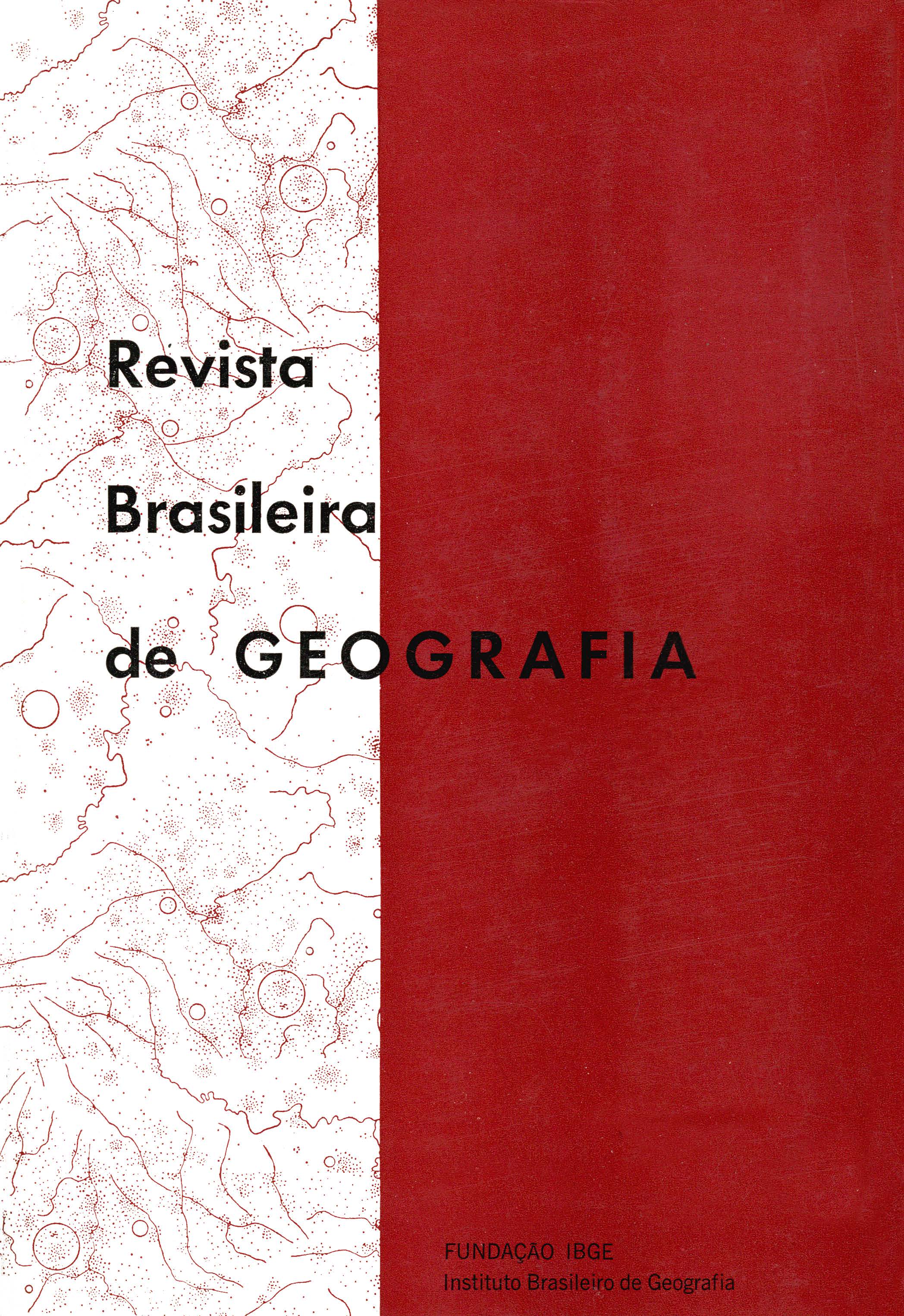Contribuição à geomorfologia do Brasil Central
Palavras-chave:
Mapeamento geomorfológico, Geomorfologia, Geologia estratigráficaResumo
This paper is based on the recent stratigraphic data and on observations made in an area of 1,000,000 km² of Brazil Central, utilizing an aerophotographic cover, an up to date cartography and the new geological mapping (1:60,000, 1:45,000 and 1:25,000 aerophoto scales, planimetric maps on 1:100,000 scale and geological charts on 1:250,000 scale).
With the aid provided by this data it was possible to carry out a study of the geomorphological aspects with is presented in this areas, affording an opportunity in applying the L. C. King's concept of cycle surfaces, as yet to enlarge westward of the area, observed by him, the identification of those surfaces. Underlying to various levelling stages it was developed large detrital-lateritic layers.
Whether by the necessity of representation in geological maps, or by description of residual concentration deposits and pedogenetic types, it is necessary a classification of those layers, to which we are proposing here, based on its composition and relation with a sequence of geomorphological occurrence resumed below:
Holocene/Pleistocene
Paraguaçu subcycle
Alluvium in the great rivers, terraces in highland streams, coastal sandy sedimentation (bars, lagoons, beach ridges, reefs) virtual stabilization of the shore line.
Dissection of the plains of Velhas cycle.
Classitication
Qha - Alluvial deposits
Qhc - conuvial deposits
Qhi - Non-classified deposits
Pleistocene/Pliocene ( or Plio-Pleistocene)
Velhas cycle
Levelling of Barreira series. Large alluvial area in the great rivers (Paraguai, Araguaia, Xingu, São Francisco alluvial plains). A light transgression has its beginning (bending of sedimentation surface of Barreiras series), overflowing of coastal drainage (bays and rias), notching of the Serra do Mar and thick sedimentation in continental platform.
Opening of underground drainage, developing the actual karst topography.
Auriferous, diamantiferous, stanniferous and kaolinic placers (clays, sands, etc).
Classification
Qpa - Stabilized and semi-consolidated alluvial deposits (at 150-700 m above sea level in considered area)
Qpi - Non classified deposits
Qpal or Qpil - When under lateritic effects
Pliocene/Senonian ( Tertiary /Superior Cretaceous)
South-America cycle
The most complete and larger levelling is occurred in Brazil, cutting the Bauru and .Serra Negra sediment (Urucuia, Capacete, Uberaba, etc.), exhuming the alkaline complex and developing the underground drainage in the limestone are.
In the juvenile stage a marine sedimentation is processed (Calumbi, Mosqueiro, Itamaracá, Gramame, Maria Farinha, Jandaíra, Barreirinhas, Pirabas formations).
In the old age thin marine sediments were formed, the Barreiras formation is covered by sediments and the small graben of Paraíba do Sul river is fulfilled. Last activities of explosive volcanism of alkaline lava.
Classification
Tngi (Neogen) - Non-classified deposits (It is very hard to assure its origin)
Tngil - When under lateritic effects
Turonian/Berriasian (Middle to inferior Cretaceous)
Post-Gondwana cycle
It begins with and arid climate during the Superior Jurassic-Inferior Cretaceous.
Large development of the Botucatu erg and of the Areado and Serra Negra "uedes". Thick coastal sedimentation (Bahia, Sergipe, Rio do Peixe, Sambaíba group). Basaltic flow in full activity. Alkaline chambers begin to forro.
In old age phase the explosive volcanism is broken out in West part of Minas Gerais (Tufos, Uberaba and Capacete); the coastal sedimentation is ended. Climatic change occurs, processing wide sandy continental sedimentation (Bauru, Areado, Serra Negra, Urucuia) which fulfill the desertic valleys.
Only some rare high rocky summits can doubtfully be ascribed to the relief of this cycle. There is not detrital cover.
Superior Jurassic/Permian
Gondwana cycle
With the retreat of the inland ice the continent lifts up moderately, remaining plane. A moderate erosion ends with the continental sedimentation (Aliança and Sergi in the Northeast). It has beginning an ergs formation and basaltic flows.






